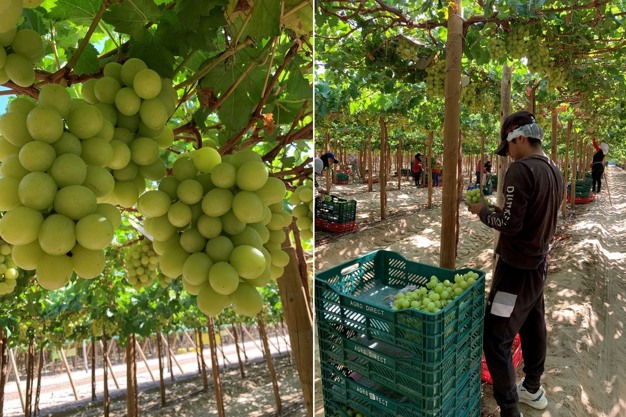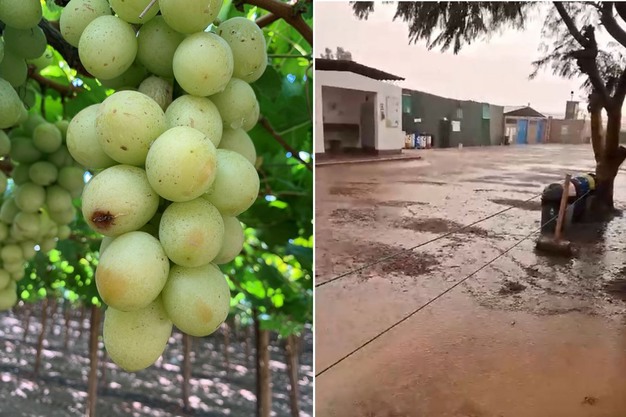South American table grape growers enjoyed an epic 2024 season of extended high prices in the U.S. As a result, Peru and Chile put their focus for this season on the U.S. and reduced shipments to Asia and other global markets. "Unfortunately, this change in direction has resulted in the American market being oversupplied with grape volume this season," says Ira Greenstein with Direct Source Marketing. "Growers shifted away from Asia and now that market is undersupplied, resulting in a very strong pricing." The U.S. table grape market on the other hand has collapsed and prices are well below the cost of production for South American growers.
Potential port strike contributes to the problem
However, it hasn't been like that all season. When Peru started shipping to the U.S. this past fall, prices were strong. California's table grape harvest had ended early, and the U.S. market was hungry for grapes. The situation became complicated when the ILA announced a port strike effective January 15. "Looking back, the pending strike on the U.S. East Coast was the start of the downfall," commented Greenstein. "U.S. importers were very concerned they wouldn't be able to meet their customers' needs and started building inventory. They held fruit back in cold storage, ensuring they could manage a potential two-week strike and have enough fruit available for their retail customers. When the strike was averted, it was too late and the damage was done, as inventories had piled up."
At the same time, fresh fruit continued to come in. In fact, heavy volumes started arriving as Chile's table grape season started early this year. "We now have a massive perfect storm of old inventories preparing for a strike, heavy arrivals from Ica, Peru as well as early volumes from Chile," said Greenstein" The U.S. had more fruit available than it could sell while there were no retail promotions in January in preparation of a pending strike and lack of volume. "By the time retailers were ready to correct the prices at store level, it was too late, and the market completely collapsed."

Five million boxes shipped per week
"The key number of three million boxes entering the U.S. per week will always maintain a market. However, over the past four weeks, arrivals into the U.S. averaged almost five million boxes," Greenstein shared. Effectively creating a supply exceeds demand situation. In the past month, the spot market for table grapes has come down from $36-$40 on January 10, to $20-$24 by February 15th. "Today, good quality red and green XL grapes are $20-$22 on the spot market." This past week, the exports to the U.S. dropped below four million boxes, but it will take the next four to five weeks for the market to stabilize and straighten out.
Average quality fruit
"The real problem now is that there is so much average quality fruit in the market while high-quality fruit is needed to drive sales." Wholesale terminal markets are being flooded with older poor-quality fruit and a lot of that fruit is being sold at less than $10.00 or sent off to foodbanks. "While the market was golden before the pending strike, growers are losing a lot of money at the moment, and it will take time for the market to recover." Greenstein doesn't expect the market to correct itself until the end of March. Chile will still ship significant volume until then and with inventories being so high, the situation of oversupply is expected to continue for another five weeks. "By April, we are hoping that things will turn around. Supplies will be under control, pricing will go up, and the market will go back to profitable levels."

Some areas received almost 30 mm. of rain in three hours.
Ica rains during harvest
If this isn't enough, Peru's Ica region was impacted by rain over the past 10 days. At the time, about 70 percent of the fruit had been harvested, but the remaining 30 percent is expected to be significantly impacted. "Some volume that will not make it to market. As a result, we will start to see a real decline in shipments from Peru. It will probably result in a reduction of a million boxes on a weekly basis." It was a devastating rain event over many days that will cost the growing community millions of dollars, and the effects are still being managed. Growers are struggling to find labor to harvest and clean the fruit as the homes of many workers have been flooded. According to Greenstein, the rains in Ica this time of year are unusual. "We have been farming table grapes in Peru ourselves since 2015 and haven't experienced anything like this before."
 For more information:
For more information:
Ira Greenstein
Direct Source Marketing
Tel: +1 (914) 241-4434
ira@directsourcemktg.com
www.directsourcemktg.com
